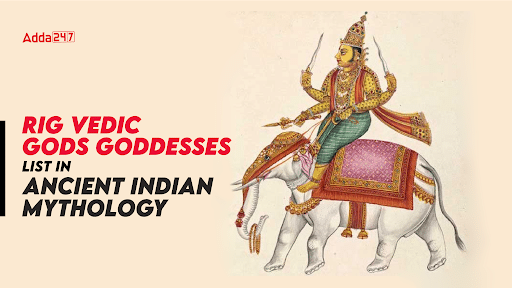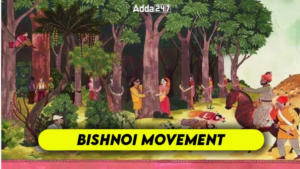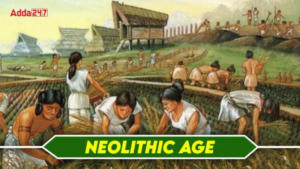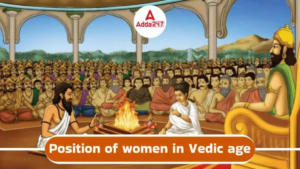Table of Contents
The Rigvedic gods are the deities who are referenced in the Rigveda. Evolving between 500 and 1500 BCE, it is the key text of the Vedic religion. 1,028 hymns are contained in the Rigveda. A large number of these hymns are dedicated to particular deities. As living entities endowed with animal or human qualities, the Vedic People understood natural forces. The main deity of the Rigveda, Indra, is often depicted as a warrior god. Saraswati, the goddess later revered in Hinduism, is not mentioned in the Rigveda. Varuna was the other major deity of the Rig Vedic era; Indra eventually took her position.
What is the Rig Veda?
The Vedic era is when the history of the Rigveda begins. The Rig Veda was written during the Vedic period, sometimes referred to as the Vedic age. The Rig Veda is thought to have been written between 1500 and 1200 BCE. Out of the four Vedas, only the Rig Veda is the oldest and has survived in its entirety. The Yajur Veda, Sama Veda, and Atharva Veda are the other three Vedas.
The suttas, or hymns, make up the Rigveda. The Rig Veda is divided into 10 mandalas or volumes. The Rig Veda’s central mandalas, numbered two through seven, are called the “family books” because they are ascribed to particular sages or Rishis. Since the first and tenth mandalas are not associated with any one sage, they are referred to as supplementary texts.
The list of Rig Vedic Gods and Goddesses
The Rigveda mentions several gods and goddesses. The gods listed in the Rigveda are:
| God | Significance |
|---|---|
| Indra | Most often mentioned god in the Rigveda and revered for slaying the great evil Vritra, enabling human prosperity through rain and sunshine. |
| Agni | Significant and frequently invoked deity, known as the mouth of the gods and conduit for offerings in rituals and described as fire on the earth, lightning in the atmosphere, and the sun in the sky. |
| Soma | Sacred drink among the early Vedic Indo-Aryans, mentioned in the Rigveda and associated with the Soma Mandala, similar to the Persian haoma. |
| Ashvins | Twin gods of medicine, health, dawn, and knowledge and characterized as celestial horsemen who aid and protect mankind in various situations. |
| Varuna | Linked with the sky, oceans, justice, and truth and mentioned in early Vedic literature as a deity associated with the sea and rain. |
| Maruts | Storm gods and sons of Rudra and Prisni in Hinduism and a group of adolescent warriors who serve as companions to Indra in Vedic mythology. |
The goddesses listed in the Rigveda are:
| Goddesses | Significance |
|---|---|
| Ushas | The Vedic goddess of dawn is mentioned several times in Rigvedic hymns and regarded as the most elevated goddess in Rig Veda, though not as central as Agni, Soma, and Indra. |
| Rudra | Rigvedic god linked to wind, storms, medicine, and hunting and described as the “mightiest of the mighty” and associated with eliminating issues at their source. |
| Aditi | Significant Vedic deities embodying the vast universe, motherhood, unconsciousness, and fertility and Mother of the Adityas, celestial deities, and several other gods. |
| Adityas | Progeny of Aditi, representing infinity and singular “Aditya” alludes to the sun deity Surya also mentioned in the Rig Veda as a celestial deity. |
Gods of Rig Vedic Age
Many gods were thought to have spiritually created the natural world. It was believed that the gods Varuna, Indra, Mitra, and Dyus were in charge of the several facets of the sky. Detailed description is provided below:
Agni- The Fire God
The Rigveda’s most sacred deity is Agni. It stands for the holy fire. It acts as a conduit for the divine force and people. Agni is utilized in several sacrifices and rites. It represents illumination, metamorphosis, and cleansing. It is said that Agni is the gods’ messenger. It facilitates contact between humans and gods and transports offerings to the sky. In Vedic rites, its presence is indispensable. Invoking blessings and heavenly favor, sacrifices are made into the sacred fire here.
Indra- The King of Devas
The powerful warrior god is Indra. It has a significant place in Rigvedic hymns. It represents courage and the function of the demon slayer. It is frequently viewed as a thunderbolt hero that battles adversaries. Because of his control over meteorological events, Indra is revered. particularly storms and rain, which are crucial for agriculture. Indra, the ruler of the devas, is a guardian. Those who fervently pray in his name will also benefit from it.
Varun- The God of Cosmic Order
The god of the cosmic seas is called Varuna. It has a prominent position in Rigvedic hymns. He is connected to the heavenly sea. It represents fairness and objectivity. Varuna supervises the cosmic laws that control the universe. It guarantees the balance and harmony of creation. Worshippers offer prayers to Varuna asking for protection, wisdom, and pardon. People ask for his blessings to preserve morality and righteousness.
Surya- The Sun God
The brilliant sun god is called Surya. In Rigvedic hymns, it stands for warmth and light. He is regarded as the origin of vitality and life. It chases the gloom from the earth and lights up the heavens. In this depiction, Surya is seen bestowing blessings upon all living things while riding a chariot pulled by seven horses. Invoking Surya for well-being, wealth, and wisdom is common among devotees. It is acknowledged that he is the heavenly enlightener who banishes ignorance and unveils truth.
Interesting Facts about Rig Vedic Gods
Get fascinating insights into the Rig Vedic Gods’ universe:
- Diverse Universe: The gods and goddesses of the Rig Vedic mythology stand for various facets of the natural world, ideas about the universe, and human experiences.
- Symbolic Features: These attributes and meanings are specific to each Rig Vedic god, offering a profound comprehension of the interconnectedness of the universe and humans.
- Worship songs: The numerous songs in the Rig Veda devoted to these gods demonstrate the devotion and reverence the ancient Vedic adherents had for the divine forces.
- Persistent Honor: Even after thousands of years, many Rig Vedic gods are still revered in contemporary Hinduism. It illustrates how deeply ingrained Vedic traditions are in contemporary spiritual ceremonies.
Other Rig Vedic Gods
There were neither idols nor temples, according to the sources. The method of prayer was mantra repetition. This is a list of the Rig Vedic Gods and Goddesses along with associated natural forces, which can be a very helpful study guide for students getting ready for competitive exams.
| List of Rig Vedic Gods | |
|---|---|
| Deity | Associated Natural Force |
| Vayu | Wind |
| Dyaus | Father of Heaven |
| Aditi | Mother of Surya (Sun God) and other gods |
| Maruts | Storm Spirits or Wind Gods |
| Gandharvas | Divine Musicians |
| Ashavins | Divine Twins, Healers of diseases, and experts in surgical art |
| Ribhus | Deities associated with crafting and transformation |
| Apsaras | Celestial Nymphs, Mistresses of Gods |
| Rudra | Fierce deity associated with storms and the hunt |
| Usha | Goddess of Dawn |
| Prithvi | Earth Goddess |
| Aryani | Forest Goddess |
| Saraswati | Goddess of Knowledge and the Arts, often associated with rivers and water |
Many changes and upheavals occurred throughout the Rigvedic era. The most important and powerful god in the Rigveda, Indra, was gradually declining. With time, Saraswati, the goddess who is mentioned nowhere in the Rigveda, came to be known. Instead of Indra, the main deity during the conclusion of the Rigvedic era was Agni. As the social and political climate of the day changed, so did the hierarchy of gods.



 Bishnoi Movement - History, Objective, a...
Bishnoi Movement - History, Objective, a...
 Neolithic Age- Agriculture, Tools, Potte...
Neolithic Age- Agriculture, Tools, Potte...
 Position of Women in Vedic Age: Societie...
Position of Women in Vedic Age: Societie...




